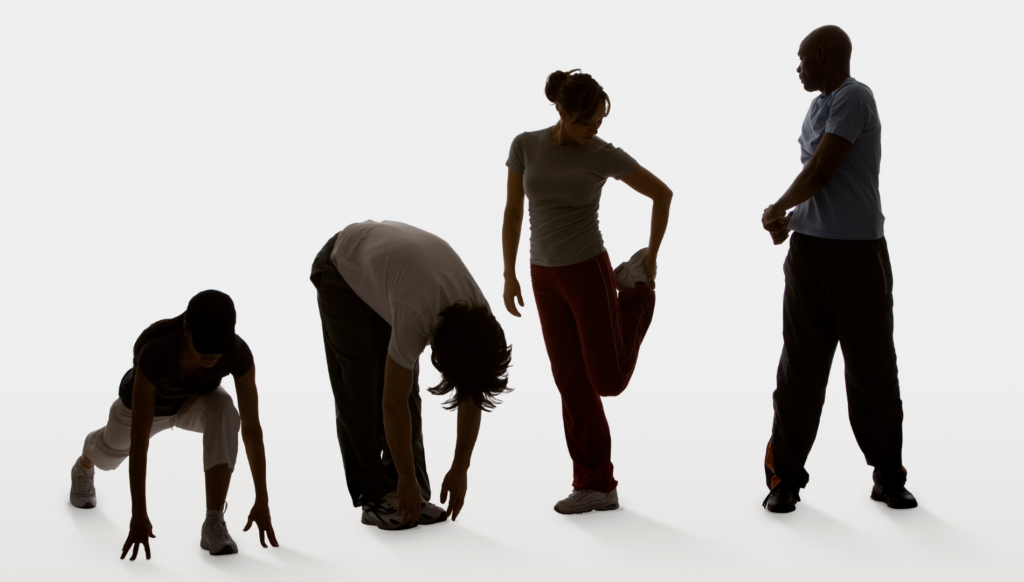What’s This Research About?
The aim of this study is to compare how slow dynamic, fast dynamic, and static stretching affect recovery from fatigue. Specifically, it looks at recovery in terms of flexibility, balance, joint awareness, and strength over a one-hour period after fatigue. The researchers want to determine which type of stretching is most beneficial for recovering performance and preventing injury.
Regular exercise offers many health benefits, but intense activity can lead to muscle fatigue and increase injury risk, especially during high-intensity training. To boost recovery and reduce injury risk, techniques like foam rolling, massage, and stretching are often recommended.
Stretching is often used to improve flexibility, which helps the joints move more freely. Improved flexibility can potentially enhance muscle function and prevent injuries. Different types of stretching are commonly used, especially static stretching (SS) and dynamic stretching (DS). Static stretching involves holding a stretch for some time, while dynamic stretching involves moving muscles through their full range of motion, often with controlled speed.
There are still many unanswered questions about how different types of stretching—slow dynamic stretching (SDS), fast dynamic stretching (FDS), and static stretching (SS)—affect recovery and athletic performance. Some studies suggest that long SS can impair performance in activities like jumping, sprinting, and strength exercises, while DS appears to have little to no negative impact and may even improve performance in some cases.
Traditionally, SS has been popular because it is easy to perform. However, some previous research shows that long periods of static stretching may decrease strength, power, and endurance. Dynamic stretching is thought to improve strength, agility, and performance without causing a drop in power. Dynamic stretching can also improve body awareness and muscle coordination, making it a recommended alternative for athletes.

TITLE: Efects of slow dynamic, fast dynamic, and static stretching on recovery of performance, range of motion, balance, and joint position sense in healthy adults
PUBLICATION: BMC Sports Science, Medicine and Rehabilitation
DATE: August 2024
AUTHORS: Abdolhamid Daneshjoo, Elham Hosseini, Safoura Heshmati, Mansour Sahebozamani, and David George Behm
Fast Dynamic Stretching (FDS): Similar to slow dynamic stretching, but the movements are performed at a faster pace (100 beats per minute). This type of active stretching quickly moves muscles through their full range of motion, focusing on speed and agility while still avoiding static holds.
Recovery of Performance: In this paper, recovery of performance refers to the process of restoring the body’s ability to perform physical tasks (like jumping, muscle strength, balance, flexibility, and body awareness) after it has been weakened by fatigue. Essentially, it’s how well and how quickly the body returns to its normal, pre-fatigue level of performance following a workout or strenuous activity.
Slow Dynamic Stretching (SDS): Involves moving a muscle slowly through its full range of motion, repeating the movement multiple times in a controlled manner, typically at a slower pace (50 beats per minute). It’s designed to gently stretch and activate muscles without holding any position for too long. Considered an active form of stretching
Static Stretching (SS): Involves stretching a muscle to its maximum length and holding that position for a period of time without movement. This type of stretching focuses on flexibility and lengthening the muscle, typically performed after reaching the full range of motion. Can be active or passive.

